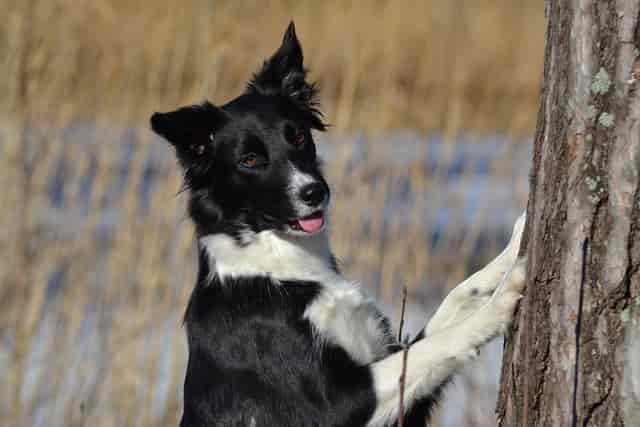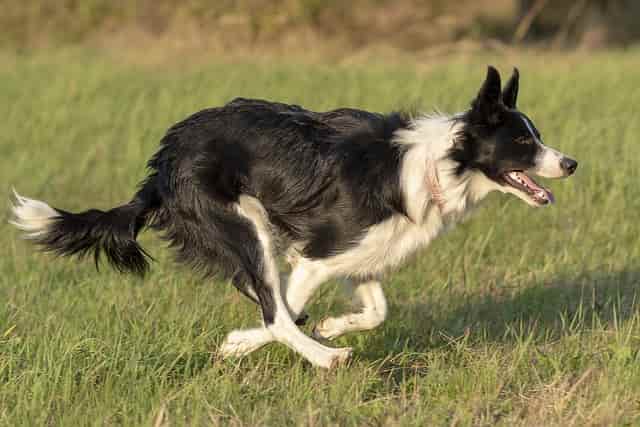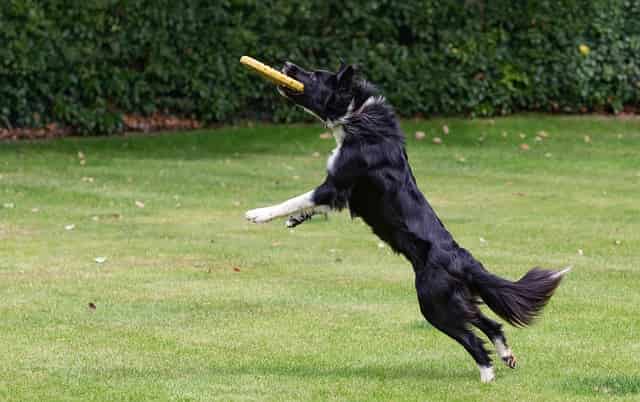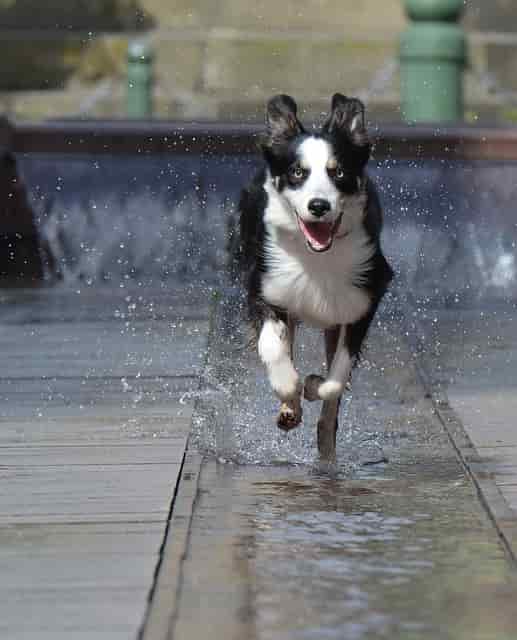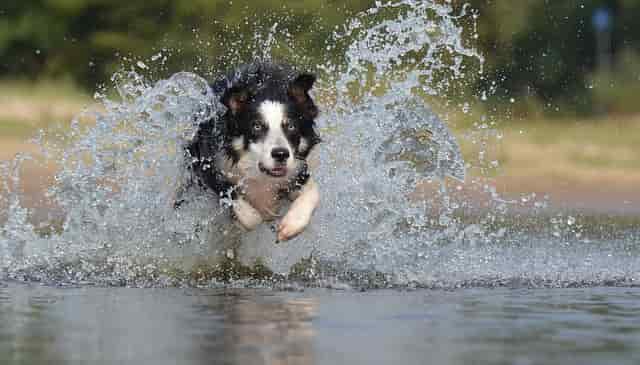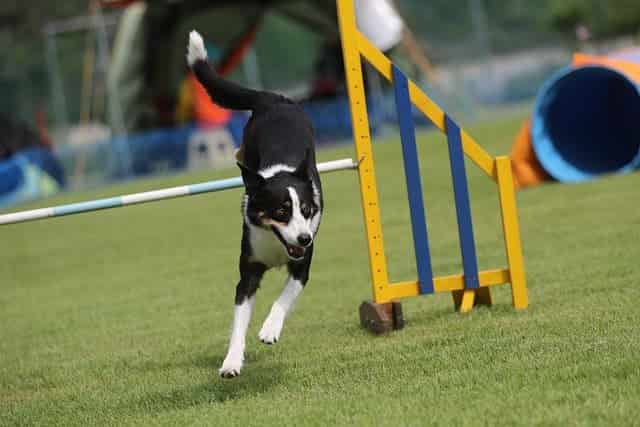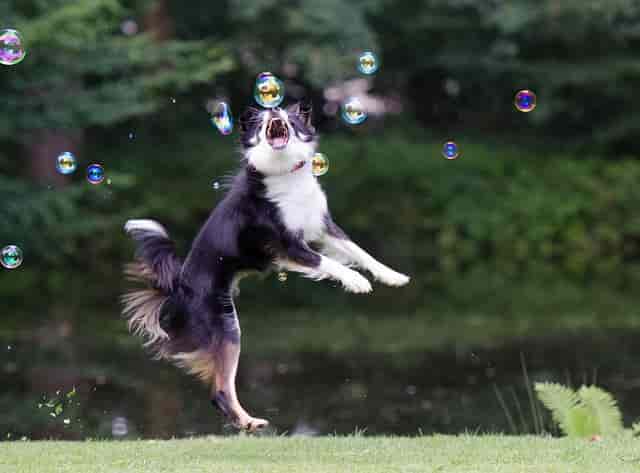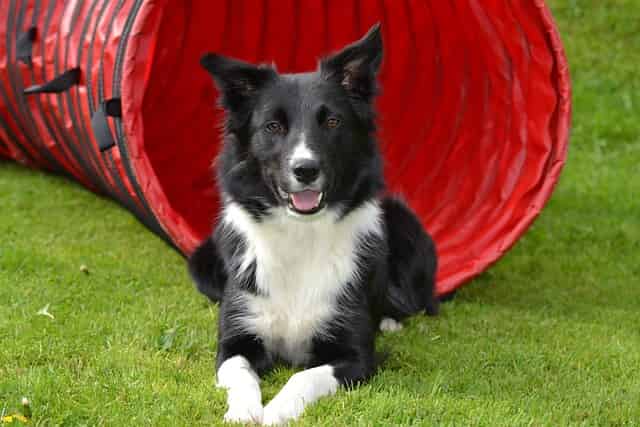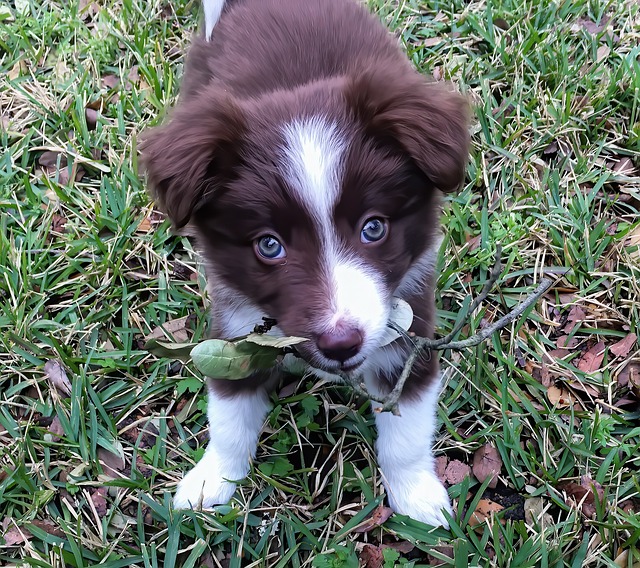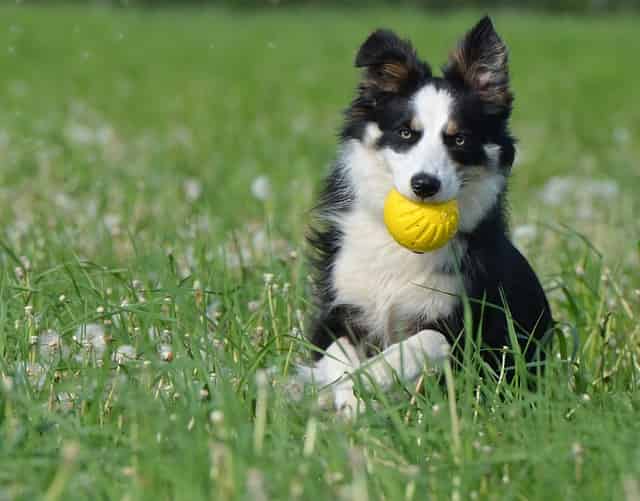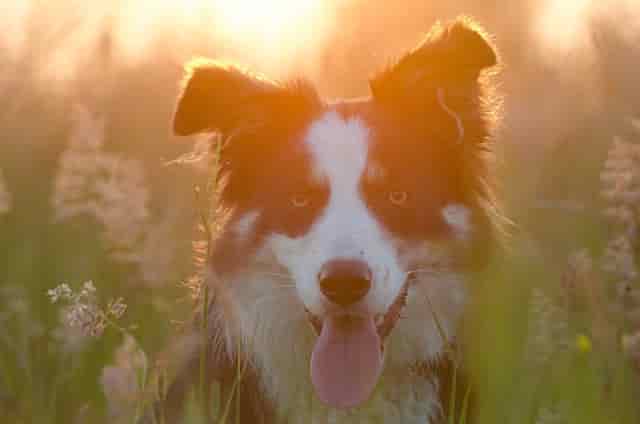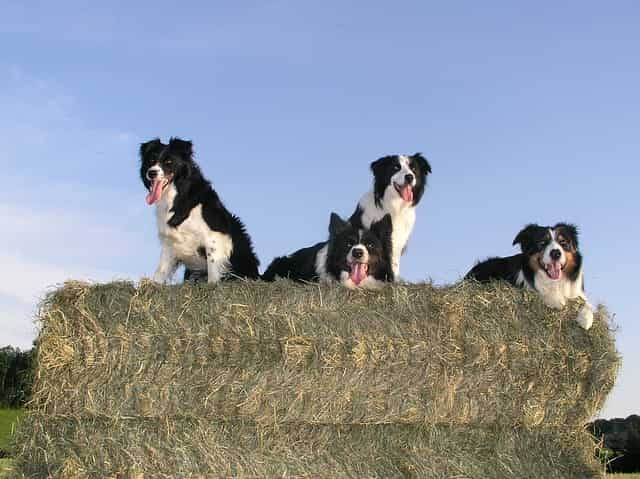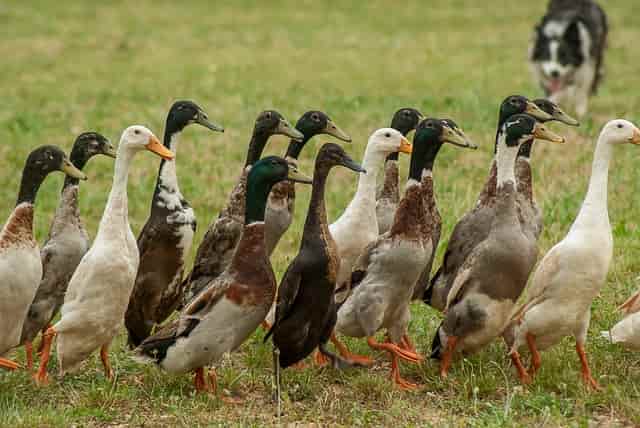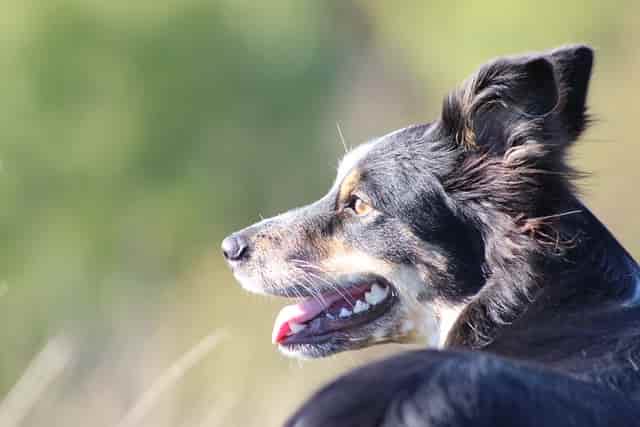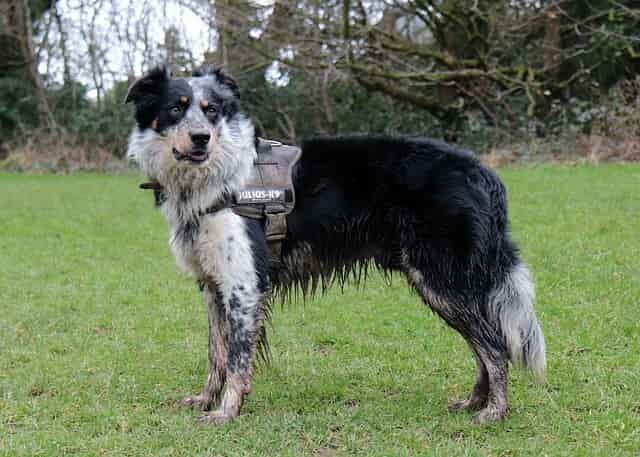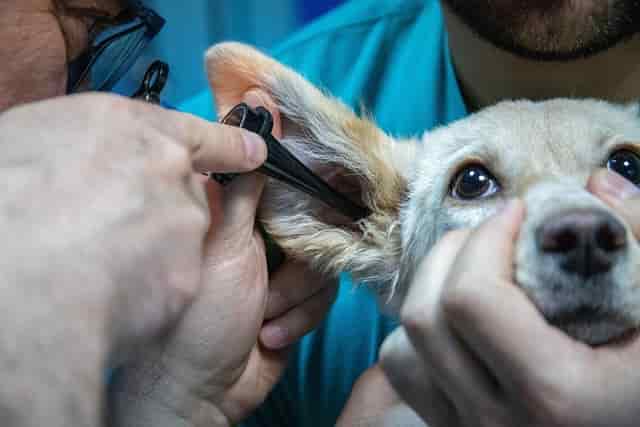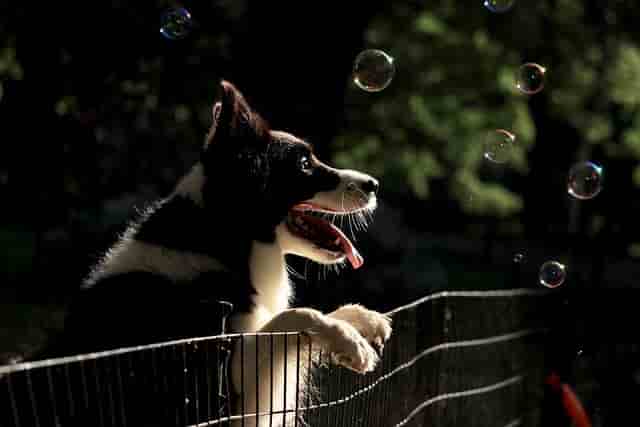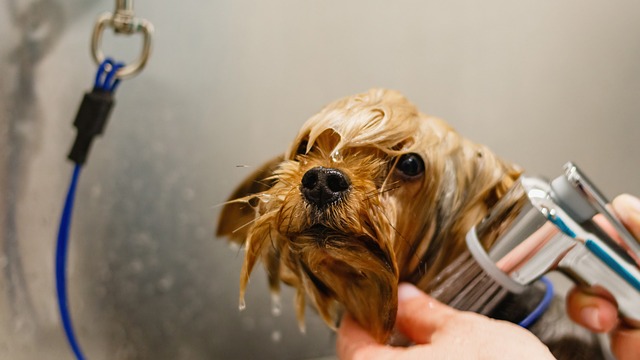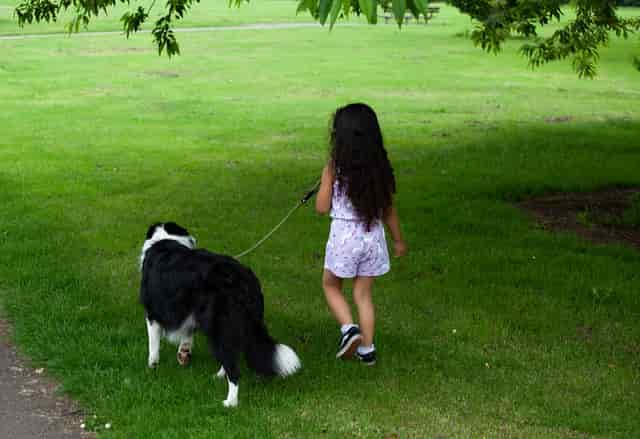
Border Collies are known for their intelligence, energy, and work ethic. They are a popular breed of dog that is often used for herding livestock, as well as for other tasks that require a high level of intelligence and obedience. However, many people wonder if Border Collies are good with kids.
While Border Collies are not typically aggressive towards children, their high energy levels and herding instincts can sometimes make them difficult to handle around kids. They may be prone to nipping or herding children, which can be dangerous if not properly managed. Additionally, Border Collies require a lot of exercise and mental stimulation, which can be difficult for some families to provide.
Despite these potential challenges, many Border Collies are wonderful with children when properly trained and socialized. They can be loving, loyal, and protective of their families, and can make great companions for kids who are active and enjoy spending time outdoors. With the right training and care, Border Collies can be a great addition to any family with children.
Are Border Collies Good with Kids?
Temperament and Behavior
Border Collies are known for their intelligence, energy, and herding instincts. They are highly trainable and obedient, making them great family pets. However, their intense drive and hyperactive nature can sometimes lead to behavioral issues, such as nipping and chasing.
When properly trained and socialized, Border Collies can be affectionate, loyal, and protective of their families. They are generally good with kids, but it is important to establish boundaries and teach kids how to interact with them safely.
Training and Socialization
Border Collies require proper training and socialization from an early age to prevent behavioral issues. They respond well to positive reinforcement and obedience training, and thrive on mental stimulation and work ethic.
Socializing Border Collies with other dogs, people, and pets is also important to prevent anxiety and aggression. They do well in homes with a consistent routine and clear house rules.
Exercise and Energy Level
Border Collies are highly active and require daily exercise and mental stimulation. They do well in homes with a yard or access to outdoor activities, such as hiking or agility training.
Their energy level can sometimes be too much for small children, but with proper training and exercise, they can make great companions for families with older kids.
Grooming and Health
Border Collies have a medium-sized coat that requires regular brushing to prevent tangles and shedding. They are generally healthy, but can be prone to hip dysplasia and epilepsy.
Dental care and regular check-ups with a veterinarian are important to ensure their overall health and well-being.
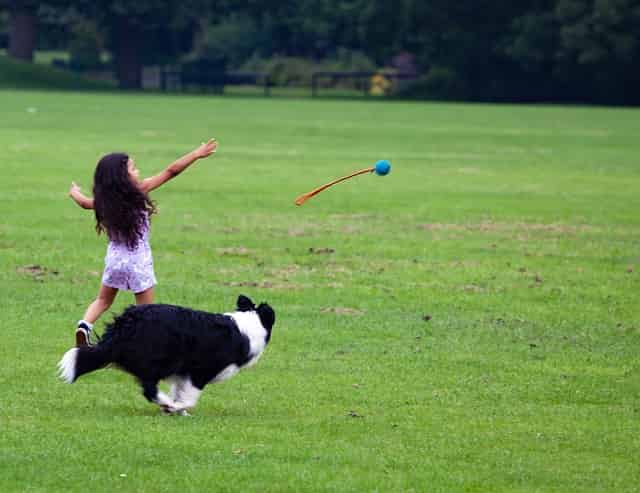
Temperament and Behavior
Friendly and Affectionate
Border Collies are known for their friendly and affectionate nature, making them great companions for kids. They are highly social and thrive on human interaction. Moreover, they are highly trainable and eager to please their owners, which makes them easy to handle around children.
Protective Instincts
Border Collies have a strong protective instinct and will do everything in their power to protect their family, including children. They are highly alert and vigilant, which makes them great watchdogs. However, this protective instinct can sometimes lead to overprotectiveness or aggression towards strangers, so it is important to socialize them from an early age.
Nipping and Chasing
Border Collies have a natural herding instinct, which means they may nip or chase kids while playing. While this behavior is not necessarily harmful, it can be frightening for young children. Therefore, it is important to train them to control this behavior and teach kids how to interact with them safely.
Training and Socialization
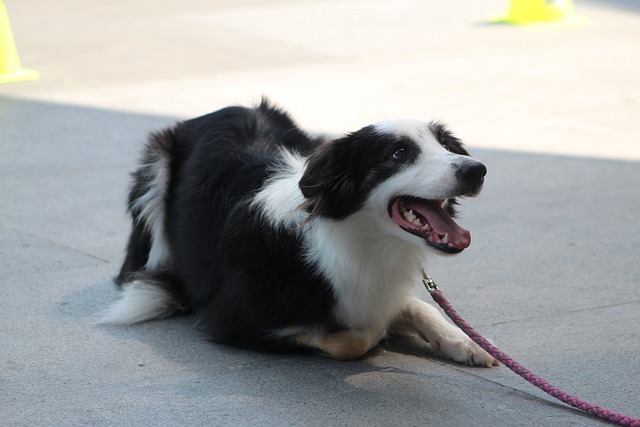
Obedience Training
Border collies are highly intelligent dogs that are eager to please their owners. As such, they respond well to obedience training. It is important to start training your border collie at a young age to ensure that they grow up to be well-behaved and obedient. Positive reinforcement techniques, such as treats and praise, are effective with this breed.
Proper Socialization
Socialization is crucial for any breed of dog, but especially for border collies. They can be prone to anxiety and fear if not properly socialized. Expose your border collie to different people, animals, and environments from a young age to ensure they are comfortable in a variety of situations.
Teaching Kids
Border collies can make great family pets, but it is important to teach kids how to interact with them properly. Children should be taught to respect the dog’s space and not to pull on their tail or ears. It is also important to teach kids how to properly handle and play with the dog.
Exercise and Energy Level
High Energy Level
Border Collies are known for their high energy levels. They are an active breed that needs plenty of exercise to keep them happy and healthy. This means that they may not be the best fit for families who are looking for a more laid-back dog. Border Collies are always ready to play and run around, and they have the stamina to keep going for hours.
Need for Exercise
Because of their high energy levels, Border Collies need plenty of exercise every day. This can come in the form of long walks, runs, or playtime in the backyard. Without enough exercise, they can become restless and destructive. It’s important to keep in mind that Border Collies have a strong work ethic and need a job to do. This means that they may not be content with just a short walk around the block.

Herding Instincts
Border Collies were originally bred to herd sheep, and they still have strong herding instincts. This means that they may try to herd children or other pets in the household. While this behavior is natural for the breed, it can be problematic if not properly managed. It’s important to provide plenty of exercise and mental stimulation to help keep these instincts under control.
Grooming and Health
Coat Care
Border Collies have a thick double coat that requires regular grooming to keep it healthy and shiny. Brushing their coat at least once a week will help remove loose hair and prevent matting. During shedding season, which occurs twice a year, they will require more frequent brushing to remove the excess hair.
It’s important to use the right type of brush when grooming a Border Collie. A slicker brush or a pin brush is recommended to remove tangles and mats. A comb can also be used to remove any remaining knots.
Bathing should be done on an as-needed basis, typically every three to four months. Over-bathing can strip their coat of natural oils, leading to dry skin and irritation.
Health Issues
Border Collies are generally healthy dogs, but like all breeds, they can be prone to certain health issues. It’s important to be aware of these potential issues and take preventative measures when possible.
Hip dysplasia and epilepsy are two common health problems that can affect Border Collies. Hip dysplasia is a genetic condition that can cause pain and discomfort in the hips. Regular exercise and maintaining a healthy weight can help prevent this condition. Epilepsy is a neurological disorder that can cause seizures. It’s important to monitor any unusual behavior and seek veterinary care if seizures occur.
Maintaining a healthy weight is important for overall health and can help prevent a variety of health issues. A balanced diet and regular exercise can help keep your Border Collie at a healthy weight.
Dental care is also important for Border Collies. Regular brushing and dental check-ups can help prevent dental issues such as gum disease and tooth decay.
Overall, with proper grooming and preventative care, Border Collies can live long, healthy lives.
Frequently Asked Questions
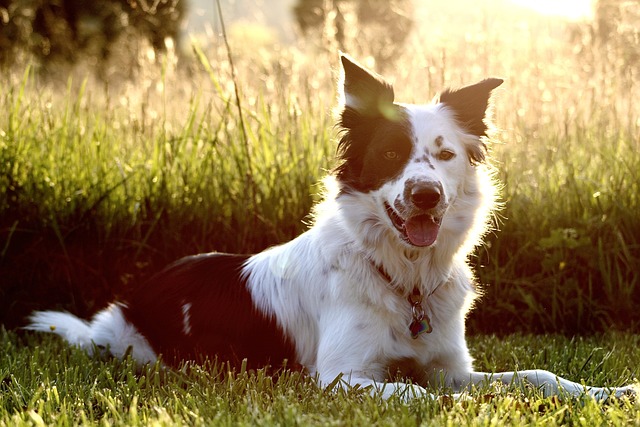
Are Border Collies safe around children?
Border Collies can be safe around children if they are trained properly and socialized from a young age. However, they are herding dogs and may try to herd children, which can result in nipping or biting. It is important to supervise interactions between children and Border Collies to ensure safety.
Is a Border Collie a good family dog?
Border Collies can make great family dogs if they are given proper exercise and mental stimulation. They are intelligent and loyal, but they require a lot of attention and training. Families with young children should carefully consider whether a Border Collie is the right fit for their lifestyle.
Do Border Collies like to be cuddled?
Border Collies are affectionate dogs, but they may not enjoy cuddling or being held for long periods of time. They prefer to be active and engaged in activities with their owners.
Are Border Collies gentle?
Border Collies can be gentle if they are trained and socialized properly. However, they are herding dogs and may have a tendency to nip or herd children or other animals.
Are Border Collies good for first-time owners?
Border Collies are intelligent and trainable dogs, but they require a lot of attention and exercise. They may not be the best choice for first-time dog owners who are not experienced with high-energy breeds.
Are Border Collies easy to train?
Border Collies are highly trainable due to their intelligence and willingness to please their owners. However, they require consistent training and socialization to prevent behavioral issues.
Are Border Collies hypoallergenic?
No, Border Collies are not hypoallergenic. They have a double coat that sheds heavily, which can cause allergies in some people.
How much are Border Collies?
The cost of a Border Collie can vary widely depending on the breeder and location. On average, a Border Collie puppy can cost between $500 and $1,500.
Do Border Collies bark a lot?
Border Collies are vocal dogs and may bark to alert their owners or to express excitement. However, excessive barking can be a sign of boredom or anxiety and should be addressed through training.
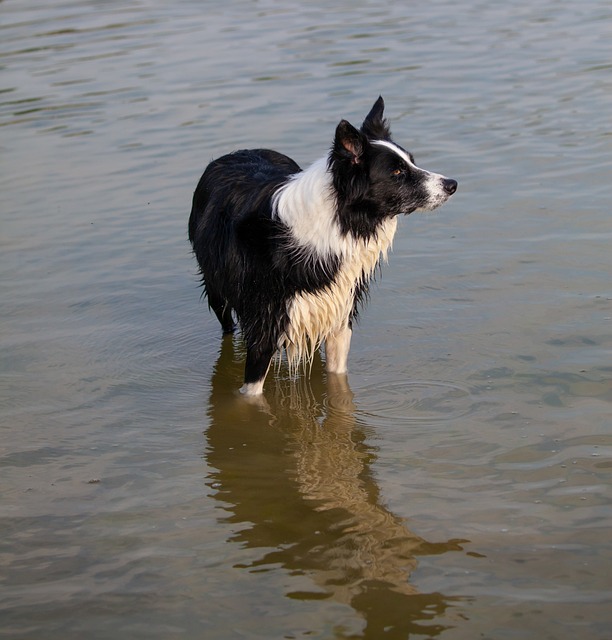
Do Border Collies like water?
Some Border Collies enjoy water and may enjoy swimming or playing in water. However, others may be hesitant or fearful of water.
Are Border Collies good with cats?
Border Collies can get along with cats if they are introduced properly and socialized from a young age. However, some Border Collies may have a strong prey drive and may not be suitable for homes with cats.
Are Border Collies aggressive?
Border Collies are not inherently aggressive, but they may exhibit aggressive behavior if they are not trained or socialized properly.
Are Border Collies protective?
Border Collies can be protective of their owners and their home, but they are not typically aggressive or territorial.
How much exercise do Border Collies need?
Border Collies require a lot of exercise and mental stimulation to prevent behavioral issues. They should have at least 1-2 hours of exercise and playtime each day.
Do Border Collies like to cuddle?
Border Collies may enjoy brief cuddling or snuggling sessions, but they prefer to be active and engaged in activities with their owners.
Do Border Collies have webbed feet?
No, Border Collies do not have webbed feet. They have small skin flaps that go partially up their toes.
When do Border Collies calm down?
Border Collies typically calm down around 2-3 years of age, but they may still require a lot of exercise and mental stimulation throughout their lives.
Why do Border Collies hug?
Border Collies may hug as a way of showing affection or seeking attention from their owners.
Are Border Collies good guard dogs?
Border Collies are not typically used as guard dogs, as they are not aggressive or territorial. However, they may alert their owners to potential threats.
Are Border Collies affectionate?
Border Collies are affectionate dogs and enjoy spending time with their owners. However, they may not enjoy cuddling or being held for long periods of time.
Are Border Collies good with other dogs?
Border Collies can get along well with other dogs if they are socialized properly from a young age. However, they may exhibit herding behavior towards other dogs.
Do Border Collies like to swim?
Some Border Collies enjoy swimming, but others may be hesitant or fearful of water.
Are Border Collies cuddly?
Border Collies may enjoy brief cuddling or snuggling sessions, but they prefer to be active and engaged in activities with their owners.
Are Border Collies loyal?
Border Collies are loyal and devoted to their owners, but they may take time to warm up to strangers.
Do Border Collies have tails?
Yes, Border Collies have tails.
When do Border Collies go into heat?
Female Border Collies typically go into heat or estrus twice a year, starting at around six months of age. The first heat cycle may occur later in some dogs, and the frequency may vary from dog to dog.
Do Border Collies need haircuts?
Border Collies have a double coat that protects them from the elements, and regular grooming is necessary to keep their coat healthy and clean. However, they do not need haircuts in the traditional sense, as their coat does not grow continuously like human hair.
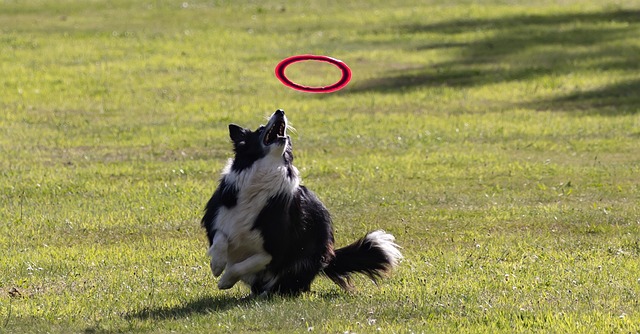
Jobs for Border Collies?
Border Collies are highly intelligent and energetic dogs that excel in a variety of jobs, including herding, agility, obedience, search and rescue, and therapy work. They are also used in law enforcement and as service dogs for people with disabilities.
How many puppies do Border Collies have?
The average litter size for Border Collies is around six puppies, but it can range from one to ten or more. The size of the litter can be affected by factors such as the age and health of the mother, as well as the quality of the breeding.
What are some good dog names for Border Collies?
There are many great names for Border Collies, including traditional names like “Shep” and “Rex,” as well as more unique names like “Zephyr” and “Echo.” Some popular names for Border Collies include “Blue,” “Ranger,” “Scout,” and “Ace.”
Are Border Collies good service dogs?
Yes, Border Collies can make excellent service dogs due to their intelligence, trainability, and willingness to please. They are often used as hearing dogs, mobility assistance dogs, and psychiatric service dogs.
Are Border Collies good with chickens?
Border Collies have a strong herding instinct and may try to herd or chase chickens, so it is important to introduce them to chickens slowly and under supervision. With proper training and socialization, Border Collies can learn to coexist peacefully with chickens.
Do Border Collies smell?
Border Collies, like all dogs, have a natural odor, but with regular grooming and bathing, this can be minimized. A healthy Border Collie with a clean coat should not have a strong or unpleasant odor.
Do Border Collies bite?
Border Collies, like all dogs, may bite if they feel threatened or scared. However, with proper training and socialization, Border Collies can learn to control their biting instincts and interact safely with people and other animals.
Are Border Collies good apartment dogs?
Border Collies are high-energy dogs that require a lot of exercise and mental stimulation, so they may not be the best choice for apartment living. However, with proper exercise and training, they can adapt to living in smaller spaces.
Do Border Collies bark?
Yes, Border Collies are known for their vocal nature and may bark to communicate with their owners or to alert them of potential dangers. However, excessive barking can be a sign of anxiety or boredom and should be addressed through training and exercise.
Why do Border Collies stare?
Border Collies have a strong herding instinct and may stare at people or animals as a way to control or move them. Staring can also be a sign of focus and concentration, which makes Border Collies excellent working dogs.
Why do Border Collies lick so much?
Licking is a natural behavior for dogs and can be a sign of affection or submission. Border Collies may also lick as a way to groom themselves or to communicate with their owners.
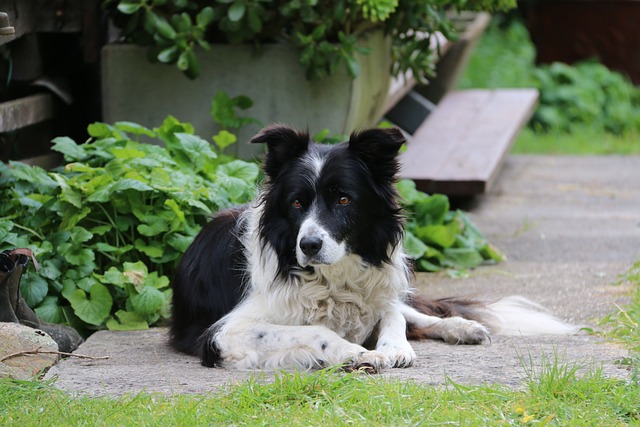
When do Border Collies’ ears stand up?
Border Collie puppies are born with floppy ears that gradually stand up as they grow older. Most Border Collies’ ears will stand up by the time they are four to six months old, although some may take longer.
Can Border Collies be left alone?
Border Collies are social dogs that thrive on human interaction, so they may become anxious or destructive if left alone for long periods of time. However, with proper training and exercise, they can learn to tolerate being alone for short periods.
Are Border Collies stubborn?
Border Collies are highly intelligent and independent dogs that can be stubborn at times. However, with consistent training and positive reinforcement, they can learn to follow commands and work well with their owners.
Do Border Collies need a lot of exercise?
Yes, Border Collies are high-energy dogs that require a lot of exercise and mental stimulation to stay healthy and happy. They benefit from daily walks, runs, and playtime, as well as activities like agility training and herding trials.
Are there miniature Border Collies?
No, there are no true miniature Border Collies. However, some breeders may advertise smaller Border Collies as “miniature” or “toy” breeds, but these dogs are not recognized by the American Kennel Club.
How do Border Collies show affection?
Border Collies show affection in a variety of ways, including wagging their tails, cuddling, licking, and following their owners around. They may also lean against their owners or nuzzle them as a sign of affection.
Can Border Collies be aggressive?
Border Collies, like all dogs, can become aggressive if they feel threatened or scared. However, with proper training and socialization, they can learn to interact safely with people and other animals.
Are Border Collies dangerous?
Border Collies are not inherently dangerous, but like all dogs, they can become aggressive if they are not properly trained or socialized. It is important to supervise interactions between Border Collies and children or other pets to prevent accidents.
Are Border Collies good hunting dogs?
Border Collies are not typically used as hunting dogs, as their herding instincts may conflict with their training as hunting dogs. However, they can be trained for hunting activities like retrieving and tracking.
